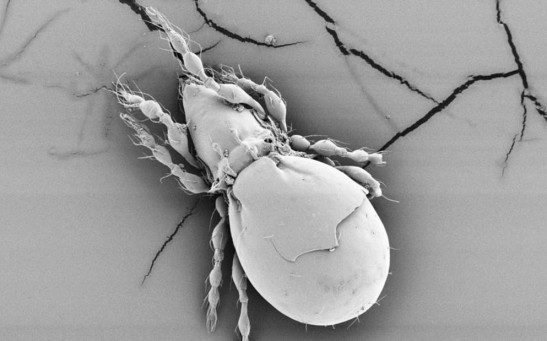ENVIRONMENT & CLIMATE
160 Million Years Old Ankylosaur Grow Spikes From Its Ribs, Oldest-Known Dinosaur Features Body Armor
Leafy Sea Dragons: How the Majestic Marine Species Thrive Under South Australia's Underwater Biodiversity
San Andreas Fault Map: What Cities Would Be Affected When Huge Earthquake Hits California?

Deep Learning Artificial Intelligence Designed As Early Warning Device to Analyze, Predict Multiple Climate Change Tipping Points

Did Humans Have Tails? Mysterious Genetic Mutation Allegedly Made It Disappear Based on 25-Million-Year-Old Fossil

Carleton Scientist's Work on Whales Helps Documentary Land an Emmy Award
Fossilized Footprints From 21,000 Years Ago Fuels New Speculation When Humans Arrived in the Americas

Elephants Benefit from Older Siblings, Especially Sisters, According to New Study
5 Years After Central America's Largest Eruption, Ancient Mayans Returned and Built Pyramid from Volcanic Ashes and Rocks
China's Climate Pledge: President Xi Pledges to Stop Overseas Coal Financing to Limit Heat-Trapping Emissions

Babies are Pooping Microplastics: Study Reveals Infants' Dirty Diapers Contain Plastics 10 Times More Than Adults
Ant Chemicals Used to Combat Plant Diseases; New Study Shows How They Can Substitute Pesticides

Macroplastic Pollution: Research Reveals It’s Clogging River Systems for Longer Periods Than Previously Believed
UW Unearthed Four Dinosaur Fossils in Montana Including Theropods, Triceratops, and a Potential Rear Ostrich-Mimic Anzu
Most Popular

7 Critical Sleep Deprivation Effects That Harm Brain Health and Cognitive Function

10 Powerful Brain-Boosting Foods Backed by Nutrition Science to Enhance Cognitive Function

If the Sun Were a Basketball, How Big Would the Earth Be? Space Scale Comparison Perfect for Kids

Top 10 Invasive Species List: Shocking Biodiversity Threats Ravaging Ecosystems Worldwide





